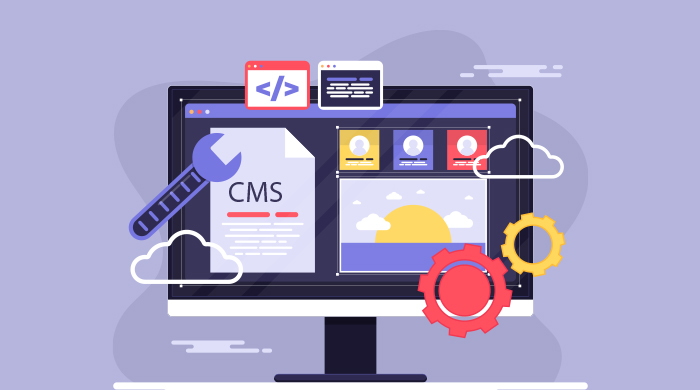With a growing online presence being vital for modern small businesses, having an effective content management system (CMS) powering your website has become extremely important. The right CMS solution can provide the tools and flexibility needed to build a site that connects with customers and meets unique business requirements.
A CMS serves as the foundation for delivering different types of content to website visitors. This can include blog posts, product listings, videos, PDF downloads and more. An effective CMS solution also provides user-friendly tools for non-technical staff to update site content without needing developer help.
In this blog, we break down the pros and cons of 5 leading platforms specifically for small business websites.
1. WordPress
The world's most popular CMS platform, WordPress powers over 35% of all sites on the web. Known for flexibility and customization, it works very well for small business websites.
Pros
- Open source platform with completely free Core version
- Massive theme and plugin ecosystem to extend functionality
- Great for blogs, service business sites and online stores
- Easy for staff to quickly update content
- Robust developer community provides support
Cons
- Can experience performance issues at higher traffic levels
- Hosting, security and backup management required
- Development costs for advanced custom functionality
2. Shopify
An all-in-one ecommerce solution, Shopify simplifies selling products online direct-to-consumer for retail brands big and small.
Pros
- Secure and reliable hosting infrastructure
- Massive theme and plugin ecosystem to extend functionality
- Mobile commerce and POS capabilities
- Integrates with marketing and fulfilment systems
- Easy to use store management tools
Cons
- Transaction fees on top of monthly costs
- Less flexibility compared to self-hosted open source options
- Limited to mostly ecommerce functionality
- Adds up for mid-sized product catalogues
3. Squarespace
An all-in-one SaaS web-building platform, Squarespace simplifies creating content-focused sites without needing to code.
Pros
- Intuitive drag-and-drop site building
- Modern responsive templates
- Built-in SEO, email marketing and analytics
- 24/7 customer support
- Good for blogs, portfolios and brochure sites
Cons
- Very limited plugin integrations and customization
- Complex sites require developer assistance
- Upgrade for advanced functionality
- Transaction fees for online sales
4. Magento
A self-hosted open source ecommerce platform for developers, Magento offers enterprise-grade capabilities to small and mid-sized retailers.
Pros
- Flexible tools tailored for developers
- Scales to support huge catalogues and traffic
- Supports both B2B and B2C models
- Extend core functionality via custom extensions
- Open source provides total control
Cons
- Very complex for average small business users
- Requires development resources for setup and management
- Infrastructure costs accrue with growth
- Steep learning curve hinders basic content updates
5. Drupal
An open-source CMS most popular in the government and higher education sectors. Provides robust enterprise-level content management tools.
Pros
- Powerful content modelling and workflow capabilities
- Secure infrastructure to manage huge volumes of content
- Extensive admin controls and user permissions
- Backed by large technical community
- Enterprise integration connections
Cons
- Significant development skills required
- Steep learning curve for average users
- Much more complex than needed for most small business sites
- Costly for advanced implementations
While many factors impact choosing an optimal CMS platform - from the business model to technical capabilities, to cost constraints - WordPress and Shopify stand above the rest in ease-of-use combined with customization abilities for most small business websites.
Understanding strengths across leading CMS solutions allows small businesses to make informed platform decisions catered to both short-term and long-term online goals. This keeps your website positioned for attracting ongoing audiences and achieving continual growth as modern users expect continually evolving digital experiences over time.

